Materials: 1. A D Size Battery 2. Paper Clips 3. 3 Feet Of Thin Coated Copper Wire 4. A 3 Inch Large
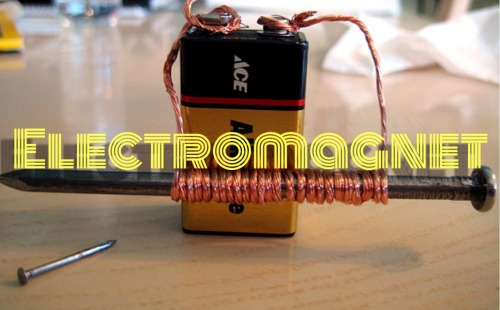
Materials: 1. A D size battery 2. Paper clips 3. 3 feet of thin coated copper wire 4. A 3 inch large iron nail
Steps: 1. First, leave 8 inches of wire at one end and wrap most of the rest of the wire on the nail ( do not overlap the wires). 2. Next, leave 8 inches of wire at the other end of the nail. 3. Then, remove an inch of the plastic coating from both ends of the wire and attach one end of the wire to one end of the battery and the other wire to the other end of the battery. 4. Finally, put the nail near the paper clips and it should pick them up!
Lesson: Magnets that cannot be turned off like ones on our refrigerators are called permanent magnets. Since the magnet we made can be turned off and on, it is known as an electromagnet. They run on electricity and are only magnetic when the electricity is flowing through the wires, which has the molecules in the nail attract to the metal paper clips.
More Posts from Funscienceexperiments and Others
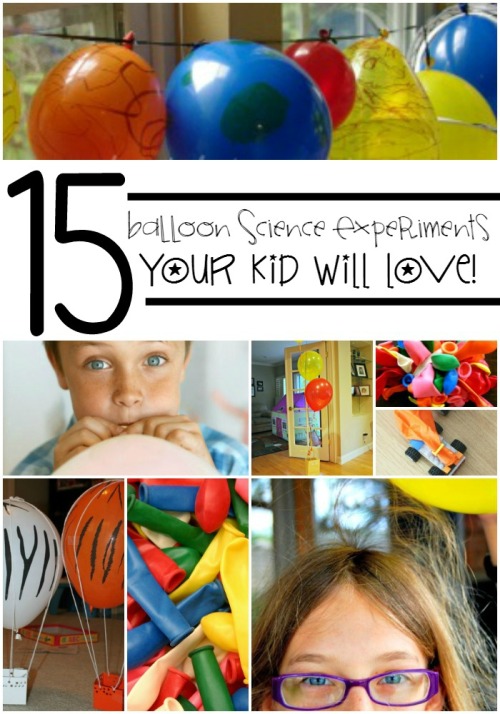
Do your kids love Balloons? Have fun with balloons while creating awesome science experiments at the same time!
Dinnertime for this jellyfish

How To Create Electricity From Falling Water
You can generate sparks of 5,000 to 10,000 volts of electricity using only two streams of water and metal mesh. Want to replicate the experiment at home? See how… http://bit.ly/1rxaoKJ

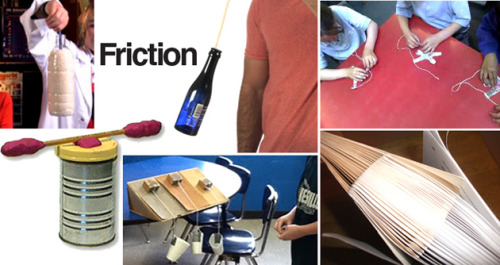


Exploring Potential and Kinetic Energy
During a physics unit, have students explore potential and kinetic energy with these five fun experiments that encourage problem solving and play.
http://www.weareteachers.com/blogs/post/2015/06/29/exploring-potential-and-kinetic-energy



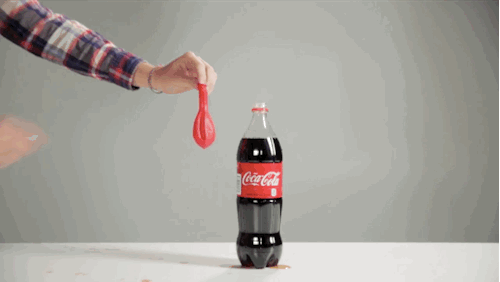
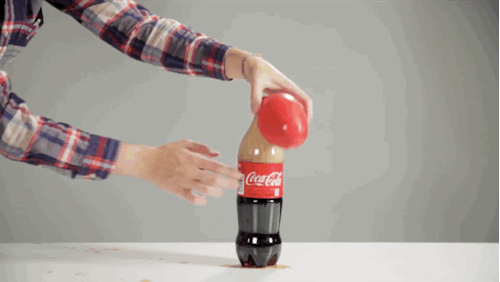
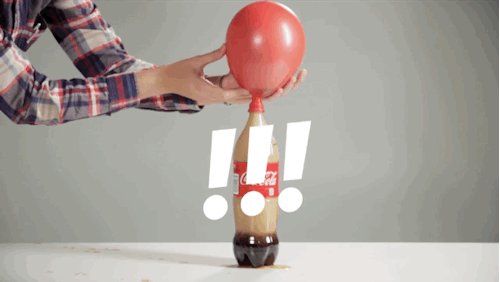

Materials: 1. Food Coloring 2. Liquid Dish Washing Soap 3. 3 Tablespoons of Warm Water 4. 1 Tablespoon of Dry Yeast 5. ½ cup of 20-volume hydrogen peroxide from a hair salon 6. Empty 16 ounce Plastic Bottle 7. Small Cup 8. Safety Goggles 9. Tray
Steps: 1. First, put on your safety goggles and place a tray in front of you. 2. Next, pour the hydrogen peroxide in the bottle. (Make sure to have an adult complete this step) 3. Then, add 8 drops of any food coloring of your choice in the bottle. 4. Next, add 1 tablespoon of liquid dish soap into the bottle and swish it to have the materials mix. 5. Then, combine the warm water and yeast together in a separate small cup and mix for 30 seconds. 6. Finally, place the bottle in the tray and pour the yeast water mixture into the bottle.
Lesson: While doing this experiment, foam appears having each tiny foam bubble filled with oxygen. The yeast acted as a catalyst or helper to remove the oxygen from hydrogen peroxide. If you touch the bottle, you notice that it is warm. That means your experiment made a reaction called exothermic reaction because it creates heat.
Octopuses are smart! They play with toys, pull off daring escapes, and are masters of disguise. But they’re also smart in a lot of ways that the human mind probably can’t comprehend. For example, they basically have independent brains in their arms!




Isaac Newton conducting experiments; refracting white light with a prism, bending light through prisms and resolving it into its component colors: red, orange, yellow, green, blue and violet.
Opticks: Or, a Treatise of the Reflexions, Refractions, Inflexions and Colours of Light, 1672.
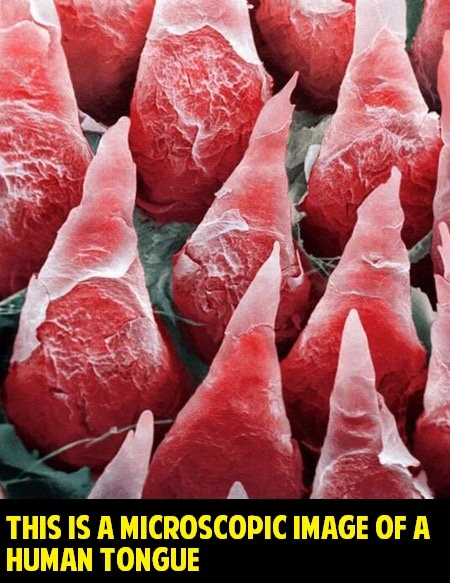
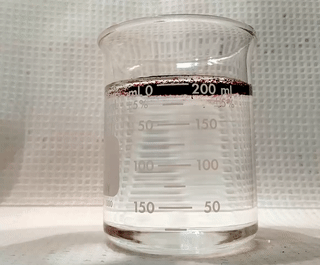
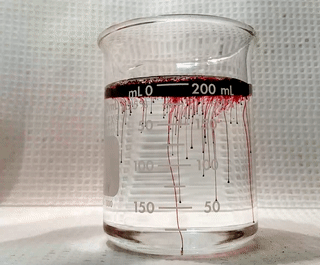
Blood rain! This is distilled water (dH2O),with basic red dye #5 (toluylene red) being sprinkled in.
-
 unabashedbarbarianpeace liked this · 2 years ago
unabashedbarbarianpeace liked this · 2 years ago -
 colorfulcollectorpirate liked this · 3 years ago
colorfulcollectorpirate liked this · 3 years ago -
 gustavolemosrocha-blog liked this · 5 years ago
gustavolemosrocha-blog liked this · 5 years ago -
 urgaanlove liked this · 6 years ago
urgaanlove liked this · 6 years ago -
 funscienceexperiments reblogged this · 7 years ago
funscienceexperiments reblogged this · 7 years ago -
 irepair247-blog liked this · 8 years ago
irepair247-blog liked this · 8 years ago -
 funscienceexperiments reblogged this · 8 years ago
funscienceexperiments reblogged this · 8 years ago -
 funscienceexperiments reblogged this · 9 years ago
funscienceexperiments reblogged this · 9 years ago -
 girlscoutmonster-blog liked this · 9 years ago
girlscoutmonster-blog liked this · 9 years ago -
 vintage-cate liked this · 9 years ago
vintage-cate liked this · 9 years ago -
 funscienceexperiments reblogged this · 9 years ago
funscienceexperiments reblogged this · 9 years ago
Hi everyone! I'm Ashley P. and I'm a Girl Scout who wants to make a difference in the world. Currently, I've been working on my Gold Award Project, which is a project where Girl Scouts solve an issue in their community to earn the Gold Award. The Gold Award is the highest award a Girl Scout can achieve. In my project, I'm addressing the issue on how there are a lack of women in the STEM field by creating a program to do fun science experiments with younger girls. Also, I constructed this blog for parents and children to do exciting and simple experiments with their kids to spark a passion in this subject like what happened to me as a child. I hope you enjoy and try to accomplish the experiments I post! Also, please have adult supervision while completing these experiments.
210 posts